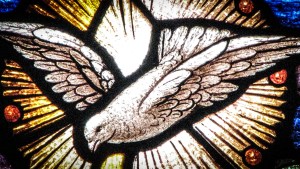For many Catholics the penitential season of Lent makes sense. It has clear and well-established disciplines that are easy to remember and implement.
During Lent, we will often choose a specific Lenten resolution to abide by, as well as abstaining from meat on Fridays and engaging in almsgiving.
The Easter season begins at the Easter Vigil, and then the Church is ushered into a new liturgical season.
However, the Easter season seems to have less importance in the lives of many Catholics and there are fewer disciplines or customs that highlight the summit of the Church’s beliefs.
Here are a few ideas for keeping the Easter season based on what the Church has done in the past.
1
Rest
The Church used to forbid any servile work during Easter Week, the week following Easter.
Lent was seen as a time of intense prayer and fasting, while Easter was seen as a participation in the “rest” of Heaven.
While we may not be able to take 50 days off of work, we can try to make the Easter season a time of rest and relaxation.
2
Receive Holy Communion
One of the precepts of the Church is to receive Holy Communion during the Easter season:
The third precept (“You shall humbly receive your Creator in Holy Communion at least during the Easter season.“) guarantees as a minimum the reception of the Lord’s Body and Blood in connection with the Paschal feasts, the origin and center of the Christian liturgy.
Easter is a special time to devote to the Holy Eucharist and to joyfully receive Jesus in Communion.
3
Pray standing instead of kneeling
One liturgical directive that makes a difference during Easter time is to pray standing instead of kneeling. An example of this is that whenever the Litany of the Saints is recited during Easter, it is said standing and not kneeling.
There is no strict rule that forbids kneeling of any sort during Easter, but it is an invitation.
The symbolism behind it is that kneeling is normally for prayers of penitence and Easter is not usually associated with extra penances.
Instead, standing symbolizes a person’s “readiness” (as well as relieving some of the pain your knees might have felt during Lent).
4
Learn more about the liturgy and the sacraments
Historically speaking the Easter season was normally a time for the newly baptized to understand more fully the liturgy and the sacraments.
The newly baptized underwent continuing catechesis to ensure they understood the various rites of the Church and the symbolism behind the sacraments.
The Catechismof the Catholic Church explains that this “Liturgical catechesis aims to initiate people into the mystery of Christ (It is ‘mystagogy’) by proceeding from the visible to the invisible, from the sign to the thing signified, from the ‘sacraments’ to the ‘mysteries’ (CCC 1075).
Even if you are not newly baptized, Easter is a perfect time to dig deeper into the sacraments.


